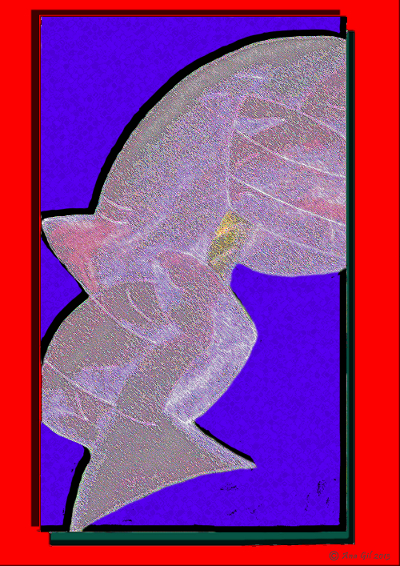A few days ago I read an article that made me really angry, especially because it is true and it is a pity. When most people visit a museum rather see something classic and figurative instead of something created in his own time. Comments such as "my three year old girl can do that" are so common to hear in the contemporary art exhibitions that I feel tempted to say what my Art Teacher in COU used to say "to cast pearls before the swine".
And maybe that's the problem indeed. Who should have taught us to appreciate and understand the art at the time, convinced us that this is only for minorities. So people see dogs, see cats and see still lifes, see naked women, saints and martyrs and believe that they understand, but do not really know what it means because they don't know the iconography, they stay in the art of realism, perspective, chiaroscuro... but they don't see these works with the mindset of the time when were performed. Then, they go to see an exhibition of contemporary art, whose message, whose background, is much closer to us, or should be. Many of these works are not so focused on a refined technique as to convey a message, but the message does not arrive because the visitor is unable to see beyond their noses and is not their fault.
I remember a spanish literature professor that I had in High Scholl. He used to write in one of the special weekly sections in "Heraldo de Aragón", the "Heraldo Escolar". He suggested to us we should write something for publication in the "Heraldo", whatever we wanted. I presented some pretty bad poetry, -I might add- and he rejected them explaining that a literary or any other kind of artwork is good just as people understand what you want to convey with it. A few years later I found these poems in a folder and I read it. It was then when I realized what my teacher told me. Not even me understood what I meant at the time I wrote that, even contextualizing in my memory the reasons that had led me to write these lines.
But this does not mean that every time you do not understand a contemporary work the artist has managed to convey his message. In the days we are, many times the message is simply to see how people react to your work. Sometimes the message is art for art's sake. We don't have to like it, but it's certainly a message. The problem is that we are not sensitized to understand. We have been programmed to value the technique because in the drawing class have rewarded us when we copied well the drawing sheet and we had a bad grade when we stained with ink the sheet because of our sweating hands drawing technical graphs. So we are mentally programmed to like only those works figuratively very elaborate and with costly performance, even though we have no idea what they are telling because they are completely out of context. About this also has a lot of guilt an inadequacy teaching staff that transmitted to their students the wrong message.
Today I'm not going to pick on the subject of education, maybe I will or not at another time, but there are other more specialized blogs than mine to deal with this issue in greater depth. What I'm going to do is upload something that I have designed and I'm going to expect, contextualizing in the era we live in, maybe you, the ones who read this post, will be able to understand the message.
I remember a spanish literature professor that I had in High Scholl. He used to write in one of the special weekly sections in "Heraldo de Aragón", the "Heraldo Escolar". He suggested to us we should write something for publication in the "Heraldo", whatever we wanted. I presented some pretty bad poetry, -I might add- and he rejected them explaining that a literary or any other kind of artwork is good just as people understand what you want to convey with it. A few years later I found these poems in a folder and I read it. It was then when I realized what my teacher told me. Not even me understood what I meant at the time I wrote that, even contextualizing in my memory the reasons that had led me to write these lines.
But this does not mean that every time you do not understand a contemporary work the artist has managed to convey his message. In the days we are, many times the message is simply to see how people react to your work. Sometimes the message is art for art's sake. We don't have to like it, but it's certainly a message. The problem is that we are not sensitized to understand. We have been programmed to value the technique because in the drawing class have rewarded us when we copied well the drawing sheet and we had a bad grade when we stained with ink the sheet because of our sweating hands drawing technical graphs. So we are mentally programmed to like only those works figuratively very elaborate and with costly performance, even though we have no idea what they are telling because they are completely out of context. About this also has a lot of guilt an inadequacy teaching staff that transmitted to their students the wrong message.
Today I'm not going to pick on the subject of education, maybe I will or not at another time, but there are other more specialized blogs than mine to deal with this issue in greater depth. What I'm going to do is upload something that I have designed and I'm going to expect, contextualizing in the era we live in, maybe you, the ones who read this post, will be able to understand the message.

